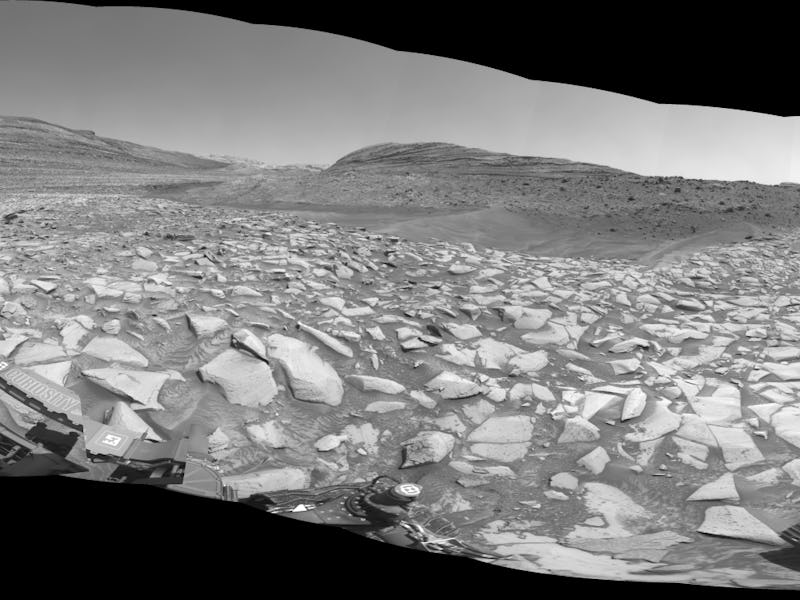NASA's Curiosity Rover Has Just Arrived Where Ancient Water Likely Existed
After more than 11 years on Mars, NASA's Curiosity rover is still visiting new and exciting places.

NASA’s Curiosity Mars rover just made it to a channel called Gediz Vallis. This spot is the perfect place for taking a dramatic alien panorama. But, it might also contain hidden clues of ancient water on the Red Planet.
Rocks have long suggested that Mars was wetter and warmer billions of years ago. Current evidence suggests that water on the Red Planet came and went in phases. NASA is searching for hints of a critical turning point: when these phases ended and liquid water permanently disappeared from Mars’s surface and forever transformed the once-wet planet into the barren world of today. Gediz Vallis might contain clues of this point of no return.
As it drives along the serpentine-shaped land feature, the six-wheeled rover will get a novel look at this “Earth-like past,” NASA officials announced on Friday.
Curiosity has now reached Gediz Vallis, the channel that runs through the center of this NASA image, created from orbital data.
Previous satellite data suggested that water flow may have helped form the channel. The debris pile inside the channel also hints that water once ran there. Geological structures within the channel suggest that the region may have dried up only to flood again, which aligns with similar evidence in other areas of Mars that NASA has explored. Scientists currently surmise that Gediz Vallis probably formed after a dry period, preceded by another wet period.
The rover team wants to confirm what carved the bedrock to create Gediz Vallis. “The formation’s sides are steep enough that the team doesn’t think the channel was made by wind. However, debris flows (rapid, wet landslides) or a river carrying rocks and sediment could have had enough energy to chisel into the bedrock,” according to NASA.
Curiosity has been exploring Mars for more than a decade to understand whether inhospitable modern Mars was once hospitable to life.